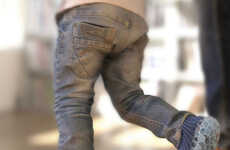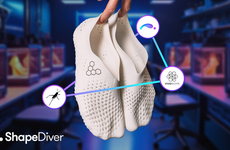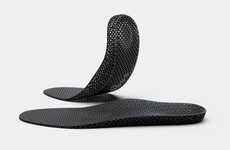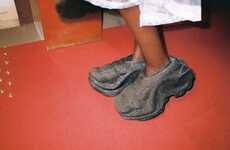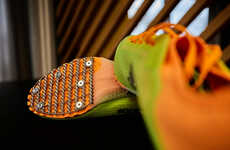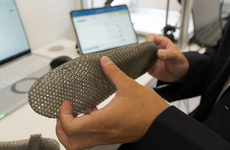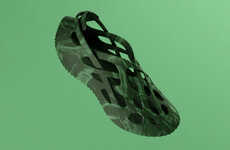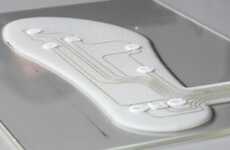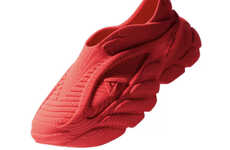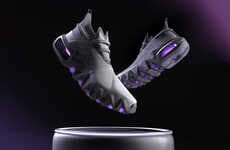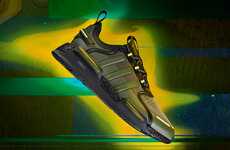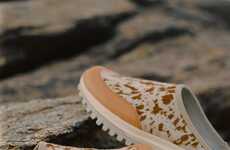
Auxetic Wear Shoes Perfectly Adjust to Feet in Real-Time
Laura McQuarrie — August 19, 2022 — Fashion
References: werteloberfell & designtaxi
Breaking in a new pair of boots can be a long and painful process but it doesn't have to be as the Auxetic Wear boots designed by WertelOberfell demonstrate. These 3D-printed shoes were intentionally made to adjust to the wearer's feet by stretching and contracting in response to the forces applied to them. Unlike some materials that become stretched-out over time, these boots are comprised of a material that actually becomes thicker, rather than thinner, with use.
These 3D-printed shoes were created with a desktop FDM 3D printer with a TPU with durability and elasticity in mind, and as their name suggests, they boast an auxetic structure.
The honeycomb-like structure of the shoes integrates a negative Poisson’s ratio, which allows the wearer to move naturally and comfortably, and slip their feet in and out easily.
These 3D-printed shoes were created with a desktop FDM 3D printer with a TPU with durability and elasticity in mind, and as their name suggests, they boast an auxetic structure.
The honeycomb-like structure of the shoes integrates a negative Poisson’s ratio, which allows the wearer to move naturally and comfortably, and slip their feet in and out easily.
Trend Themes
1. 3d-printed Footwear - Manufacturing shoes using 3D printing technology that adjusts to the shape of the feet could disrupt the traditional footwear industry by providing custom-made, personalized footwear to consumers in a matter of hours.
2. Auxetic Materials - Integrating materials with negative Poisson's ratio in various applications other than footwear are potential disruptive innovations in industries such as sports equipment or protective gear, as these can enhance comfort, performance and safety during physical activities.
3. Real-time Footwear Customization - Using technology capable of responding to the forces applied by the wearer could create opportunities in creating custom-fit clothing, including footwear, via mobile apps that scan and analyze shape and movement, or in-store kiosks that offer on-demand customization services.
Industry Implications
1. Footwear - The footwear industry can explore 3D printing technology to manufacture personalized, adjustable and comfortable footwear that reduces waste and offers a competitive edge in the market.
2. Sports Equipment - The use of auxetic materials in sports equipment such as helmets or protective padding could enhance comfort and protection for athletes, as well as reduce the risk of injury, boosting their performance on the field.
3. Fashion Retail - Retailers can adopt real-time customization technology to offer personalized and unique products to consumers, increasing customer loyalty and revenue through customization services available both online and in-store.
7
Score
Popularity
Activity
Freshness


